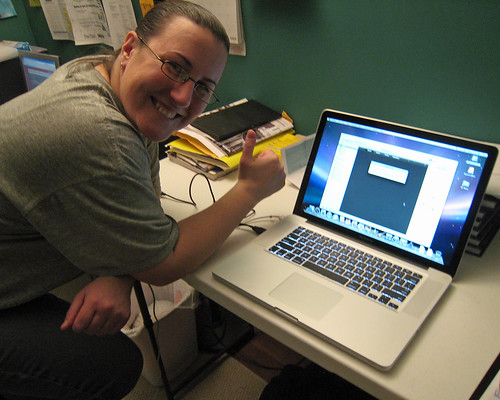Books vs. Screens: The Disingenuous Argument
The UT Librarians Blog posted another authorless post I have attempted to comment on; while they announced some time ago that the blog would no longer put comments in a moderation queue, I seem to be stuck in one. Again. And thus:
The post in question is a link to the Globe and Mail article entitled, “Books Vs. Screens: Which should Your Kids be Reading?” The article contains such wisdom as:
In Britain, University of Oxford neuroscientist and former Royal Institution director Susan Greenfield revealed a far different vision – one that could have come straight out of an Atwoodian dystopia – when she warned that Internet-driven “mind change” was comparable with climate change as a threat to the species, “skewing the brain” to operate in an infantalized mode and creating “a world in which we are all required to become autistic.”
Less dire but no less pointed warnings have come from Maryanne Wolf, director of the Center for Reading and Language Research at Tufts University in Massachusetts. “I do think something is going to be lost with the Twitter brain,” she said in an interview.
The UT Librarians (apparently collectively) said:
Is this something we should be thinking about? Deep Reading vs. Screen Reading? In today’s Globe & Mail, Dec. 12, 2011, John Barber, examines recent studies on screen reading vs. what is being called deep reading – something to consider as educators and leaders in our fields.
And now, finally, my reply from the moderation queue:
This is blatant scare-mongering, and disingenuous to boot. Comparing reading novels to reading tweets is like saying the card catalogue, with it’s tiny bits of information, was a threat to “deep thinking”.
There are many kinds of reading, and literate people engage in many of them, sometimes within the same afternoon. People who follow Margaret Atwood also, as a general rule, read novels. “Screen reading” pontificators need to spend some time looking at the actual reading (and writing) going on on the internet. Like BookCountry, from Penguin, which is practically brand new, and fictionpress. Look at all that reading and writing going on! Reading and writing of lengthy bits of writing, no less, and on screens! If you’re brave, look at Fanfiction.net (there are 56k stories on there about the television show Glee alone) or AO3 (which, for the record, has works over 100k words long with as many views and thousands of comments from readers). Lots of people read online, and form communities around texts. It might not be the kind of reading you want to see, but it’s sustained, lengthy, uninterrupted, and on screens.
We need to stop fixating on the form content takes. What the screen is providing is a platform for people who would never get their work passed through publishing houses and editors, and while you may scoff at that (because we all know money is the ultimate test of whether or not something has value, right?), there is more text to read and engage with now than ever before, and people are engaging. Young people are engaging. Some of that text is in short format (like twitter). Some of it is so long publishers would balk at the idea of trying to publish it in physical form. It doesn’t matter if it’s on a screen. Content in content. This new form has the potential to save the monograph, not just to kill it. The form of the novel, the short story, the extended series, the monograph are all alive and well and being published online.
I think, as librarians, we should be concerned with providing access to content, and, perhaps, providing platforms for content to be published, found, and engaged with on every level (deep or browse). Marrying ourselves to paper is the death knell of this profession.




